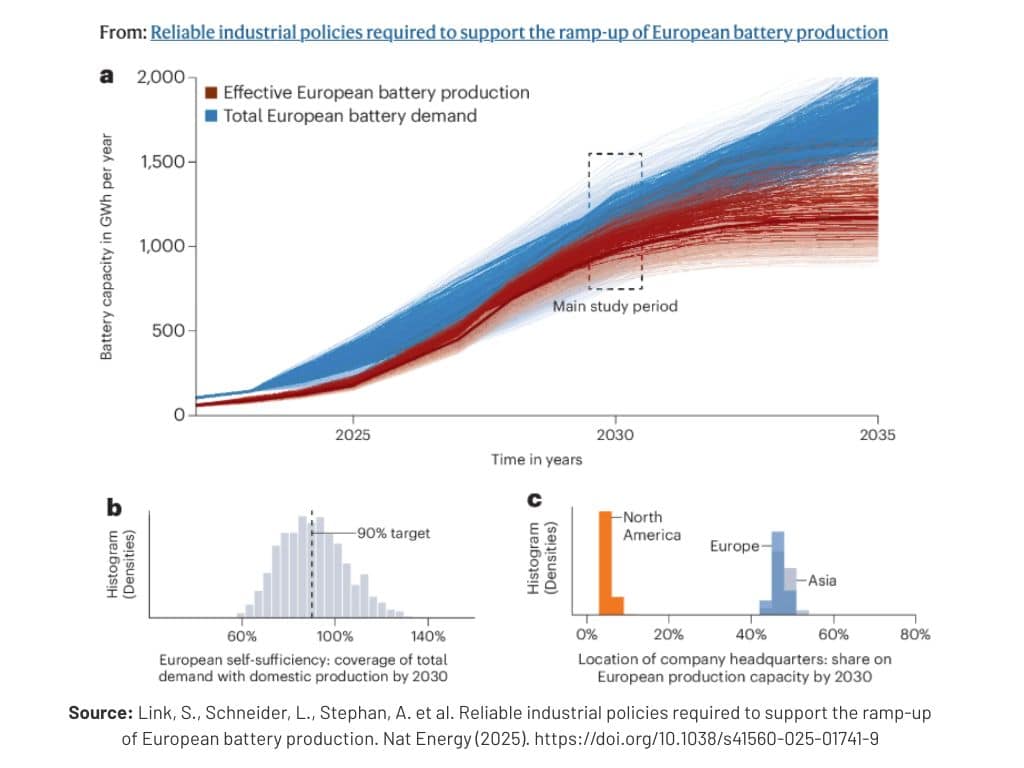According to a Nature Energy study, Europe is facing a significant challenge in meeting its projected demand for high-energy batteries, which is expected to exceed 1.0 TWh annually by 2030. Despite ambitious growth targets, domestic production is unlikely to keep pace with this increasing demand. To enhance battery self-sufficiency and competitiveness, European policymakers are urged to accelerate the expansion of production capacity and implement robust industrial policies that address sustained demand growth through and beyond 2030.
Key policy recommendations emphasize the importance of focusing on actual production capacities rather than relying solely on corporate announcements. This approach aims to ensure realistic policy planning and prevent overestimations. Additionally, maintaining a minimum level of production by local companies that utilize domestic intellectual property is crucial. Creating predictable and reliable framework conditions is essential to stimulate market demand and ensure that capacity expansions come to fruition.
Strengthening public–private partnerships is another critical strategy to reduce investment risks and streamline European regulations. This collaboration is expected to facilitate the scaling up of battery production and the development of regional supply chains. Furthermore, establishing competitive differentiation and a level playing field through de-risking industrial policies, sustainability criteria, and local content requirements at the European level is recommended. Balancing trade policies to enhance competitiveness while allowing for global collaboration and learning opportunities is also highlighted as important.
Continuous policy support is necessary, along with the integration of research and development initiatives with industrial policies. This alignment should be timed and scoped to match the scale-up of battery production and the evolving battery value chain.
The study indicates that European battery cell demand will likely surpass 1.0 TWh per year by 2030, whereas domestic production capacity is expected to cover only 50–60% of this demand, creating potential supply constraints. Achieving the European Union’s goal of 90% self-sufficiency is possible but remains uncertain, underscoring the urgency of expanding production capacity and enhancing the battery supply chain to reduce reliance on imports. Failure to scale up production could result in significant economic and geopolitical risks due to increased dependence on external suppliers and diminished industrial competitiveness.
Source: Nature Energy
















